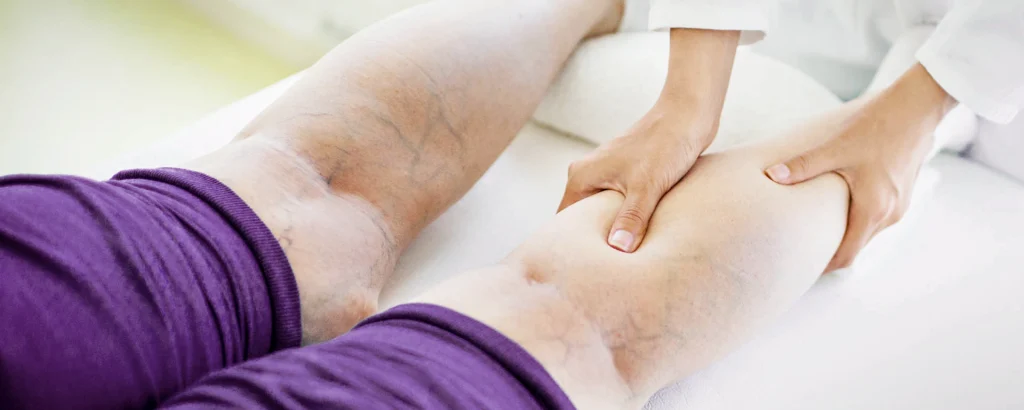You feel fine, mostly. But then some days, your hands feel colder than usual. Or maybe you notice your ankles puffing up. It’s easy to shrug these things off. But sometimes, they mean your blood just isn’t flowing like it should. These small signs can point to bigger issues, and a simple heart check-up could be the first step to finding out what’s really going on.
Your Feet or Hands Are Always Cold
It’s warm around you, but your toes feel like ice. You try socks. Maybe an extra blanket. Still cold. That’s not always about temperature, it’s often about how your blood moves. If it’s not reaching those parts well, they’ll feel cold, no matter what.
You Get Weird Tingling or Numb Spots
Your leg “falls asleep” sometimes. That’s normal if you’ve been sitting weird. But what about random tingling? Especially in your fingers or toes. If it’s happening often, and without reason, your circulation could be the issue.
Legs Look Swollen by Day’s End
Ever notice your socks leave deep lines? Or your ankles swell by the evening? Blood pooling in your lower half can do that. It happens when your circulation slows down after long hours of sitting or standing.
You’re Always Tired, Even After Sleeping
You sleep through the night. Still, you’re dragging through the day. When tiredness doesn’t go away, it might be a sign that your body isn’t getting the oxygen it needs to function well. And oxygen travels through your blood. See where this is going? It could be time to consider a heart check-up, just to rule out any underlying circulation or cardiac issues.
Pale or Blue Patches on Skin
Sometimes, fingers or lips go pale. Or even look a bit blue. This often happens when your circulation slows down and less blood is reaching your tissues. Less blood under the skin, less color. It’s not just about temperature, it can be a warning sign.

Scratches or Cuts Heal Slowly
A small cut on your hand should be gone in a few days. But what if it sticks around? Or takes forever to close up? Your bloodstream delivers what your body depends on to repair damage, like nutrients and immune cells.
If it’s not flowing right, healing takes longer.
What Can You Do?
Get Checked:
Start with a simple visit to your doctor. A routine heart check-up can catch circulation issues early. Tests like ECG or Doppler are easy, non-invasive ways to check how well your blood is flowing and whether your heart is working the way it should.
Walk a Bit Every Day:
Even 15–20 minutes of walking daily can improve blood flow and reduce the risk of clots or stiffness. If your job involves long hours sitting, try standing up every hour. Gentle movement boosts oxygen delivery, helps muscles work better, and supports overall cardiovascular health without needing a full workout routine.
Drink Water:
Staying hydrated keeps your blood at a healthy viscosity, making it easier for your heart to pump. Dehydration causes blood to thicken, raising blood pressure and stressing your circulatory system. Aim for 6–8 glasses a day, more if you’re sweating or consuming caffeine. Your circulation depends on it.
Better Food Choices:
Diet impacts circulation more than people think. Leafy greens, fish high in omega-3s, nuts, and berries help improve blood flow and heart health. Too much salt, fried food, and sugar can cause inflammation or blockages. Even small changes in what’s on your plate can lead to big improvements long-term.
Legs Up Now and Then:
Gravity pulls blood downward, especially when standing or sitting for hours. By raising your legs slightly above heart level for 15–20 minutes a day, you help blood flow back up. It also reduces swelling in ankles and calves. A pillow or folded blanket under your feet works great.
Track Blood Pressure & Sugar:
High blood pressure and uncontrolled blood sugar damage blood vessels over time. Regularly checking your levels can catch silent changes before they cause symptoms. If you’re diabetic or hypertensive, follow up with your physician. Monitoring at home using digital devices makes early detection easier and more convenient than ever
The Bottom Line
These signs? They’re not loud. But they’re real. A cold toe. A tired afternoon. Skin that looks a bit “off.” All small things, but they matter. If your body feels off, there’s usually a reason, it’s rarely just in your head. Don’t wait for things to get worse. Take action while it’s still easy to fix.